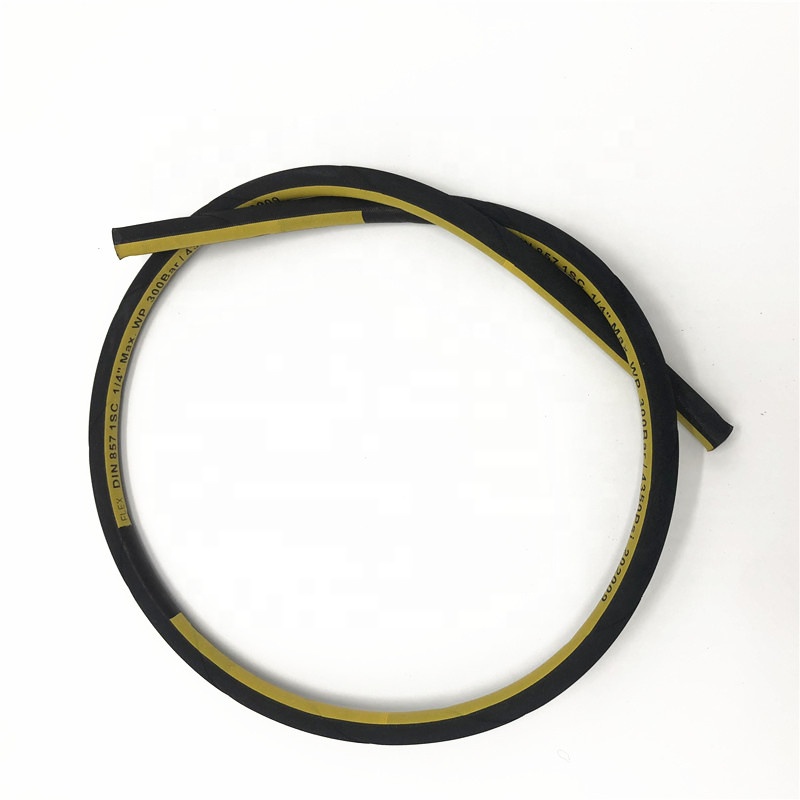335345435
Sep . 21, 2024 13:02 Back to list
mobile hydraulic hose
Understanding Mobile Hydraulic Hoses A Key Component in Fluid Power Systems
Mobile hydraulic hoses are essential elements in a wide range of applications, particularly in industries such as construction, agriculture, and transportation. These hoses play a crucial role in conveying hydraulic fluid, enabling machines to operate efficiently and effectively. In this article, we will delve into the significance, types, and maintenance of mobile hydraulic hoses, shedding light on why they are integral to fluid power systems.
The Significance of Hydraulic Hoses
Hydraulic hoses are designed to transport fluid under high pressure while maintaining durability and flexibility. In mobile applications, such as excavators, tractors, and forklifts, these hoses are subjected to constant movement, vibration, and varying environmental conditions. Their primary function is to transfer hydraulic fluid from one component to another, allowing for the effective operation of hydraulic systems. Without reliable hydraulic hoses, machinery would struggle to perform crucial tasks like lifting, digging, and maneuvering heavy loads.
Types of Mobile Hydraulic Hoses
There are several types of mobile hydraulic hoses, each designed for specific applications and pressure ratings. The most common types include
1. Reinforced Rubber Hoses These are widely used in mobile applications due to their flexibility and resistance to abrasion. They are ideal for general-purpose applications where moderate pressure is required.
mobile hydraulic hose

2. Thermoplastic Hoses Known for their lightweight and resistance to chemicals, thermoplastic hoses are often used in applications that require high flexibility and temperature resistance. They are particularly useful in tight spaces.
3. Metallic Hoses These hoses are designed for high-pressure applications and are often used in extreme conditions, such as high temperatures or corrosive environments. The rigidity of metallic hoses makes them suitable for stationary systems but is less common in mobile equipment.
4. Composite Hoses Combining features of both rubber and thermoplastic hoses, composite hoses offer excellent flexibility while being lightweight. They are often chosen for their versatility in various applications.
Maintenance and Safety Considerations
Maintaining mobile hydraulic hoses is crucial for safety and efficiency. Regular inspections should be conducted to check for signs of wear, such as fraying, leaks, or bulges. Proper installation is equally important; hoses should not be kinked or subjected to sharp bends that can cause internal damage. Additionally, it is essential to use the correct fittings and ensure that connections are secure to prevent leaks and pressure loss.
Moreover, operators should be mindful of the operating temperature range and pressure limits of the hoses being used. Exceeding these specifications can lead to hose failure, posing significant risks to both the equipment and personnel.
In conclusion, mobile hydraulic hoses are vital components within hydraulic systems, facilitating the efficient transport of hydraulic fluid in various machinery. Understanding the types and maintenance practices associated with these hoses is essential for anyone involved in industries reliant on hydraulic power. By prioritizing regular maintenance and adhering to safety standards, we can ensure the longevity and performance of hydraulic systems, ultimately enhancing productivity and safety on the job site.
-
SAE 100 R17 Black Smooth Cover Hydraulic Hose
NewsMar.07,2025
-
SAE 100 R17 Black Smooth Cover Hydraulic Hose
NewsMar.07,2025
-
SAE 100 R17 Black Smooth Cover Hydraulic Hose
NewsMar.07,2025
-
SAE 100 R17 Black Smooth Cover Hydraulic Hose
NewsMar.07,2025
-
SAE 100 R17 Black Smooth Cover Hydraulic Hose
NewsMar.07,2025
-
steel wire braided hydraulic hose
NewsMar.07,2025



